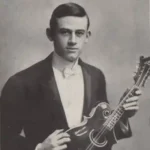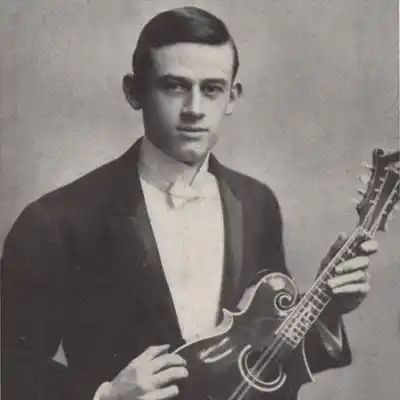
Lloyd Loar
Lloyd Loar, a name often whispered with reverence in acoustic music circles, is synonymous with innovative design, meticulous craftsmanship, and the transformation of stringed instruments.
Table of Contents
Early Life and Musical Foundations
Lloyd Allayre Loar was born on January 9, 1886, in Cropsey, Illinois. From an early age, it was evident that Loar had an intrinsic connection with music. He was not just a craftsman but also a performer, playing the viola, mandolin, and piano with finesse. This profound understanding of music and its intricacies played a crucial role in his later innovations.
Loar furthered his musical education at Oberlin Conservatory in Ohio, immersing himself in both performance and the theoretical facets of music.
The Gibson Era: Revolutionizing Stringed Instruments
In 1919, Loar joined the Gibson Mandolin-Guitar Manufacturing Co., marking the beginning of a transformative era in stringed instrument design. He didn’t just serve as a mere employee but rather as a visionary acoustical engineer and designer.
His most iconic contribution came in the form of the F-5 mandolin, introduced in 1922. The instrument was a marvel, boasting features like f-holes (akin to those on violins) and a longer neck. These changes enhanced the mandolin’s tonal clarity, volume, and sustain.
Loar’s innovations weren’t limited to mandolins. He introduced design enhancements to guitars, violins, and other stringed instruments, emphasizing tone and playability. The L-5 guitar, for instance, with its f-holes and advanced bracing, would serve as a prototype for the archtop guitars that became pivotal in jazz music.
Post-Gibson Adventures and Further Innovations
Loar’s association with Gibson ended in 1924, but his journey in instrument innovation was far from over. He embarked on various ventures, including the formation of the Vivi-Tone Company in the 1930s. Here, he delved into electric instruments, showcasing his versatility and forward-thinking approach.
Legacy and Influence
Lloyd Loar passed away on September 14, 1943, but the echo of his genius continues to resonate in the world of music. Instruments bearing his signature, especially those from his Gibson tenure between 1922 and 1924, are highly sought after and are often considered the “holy grails” of stringed instruments.
Beyond the tangible instruments, Loar’s true legacy lies in his unwavering commitment to enhancing the sonic attributes of stringed instruments. His designs, directly and indirectly, influenced countless luthiers and manufacturers in the decades that followed.
